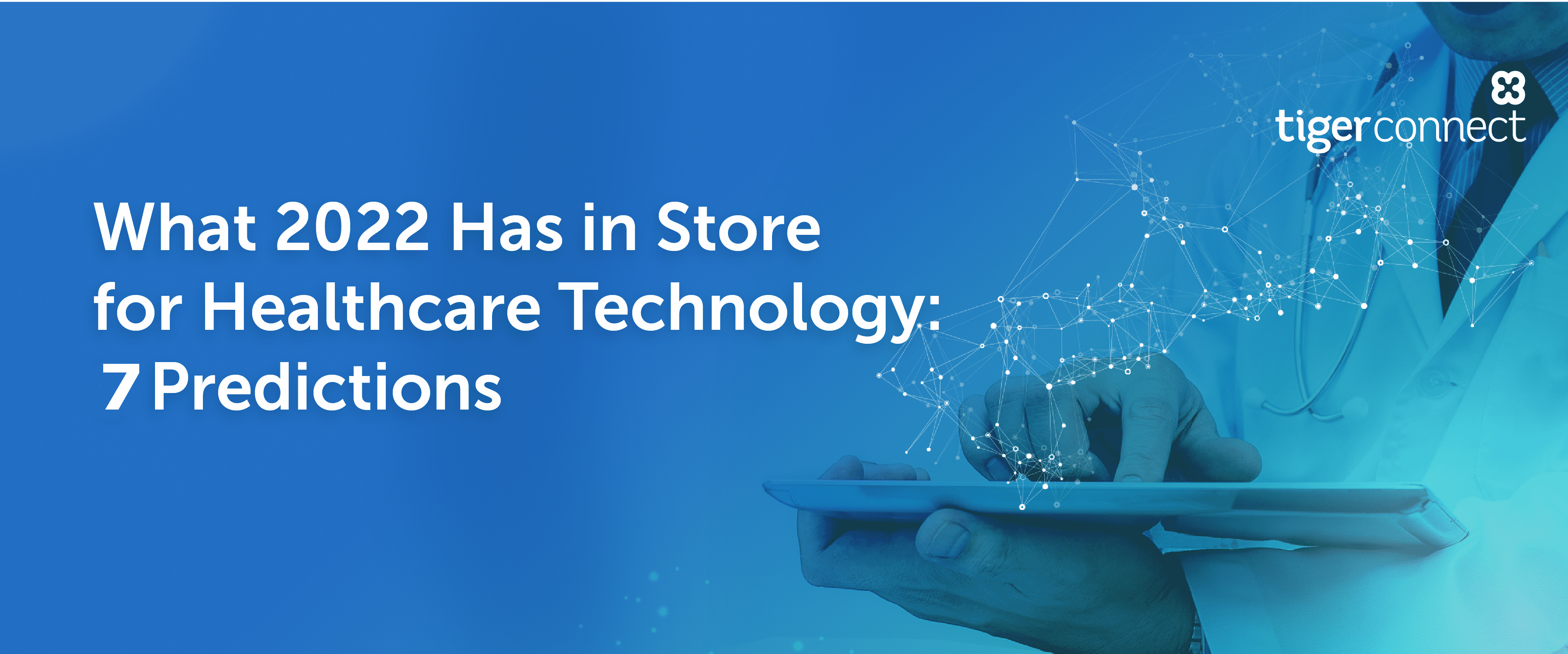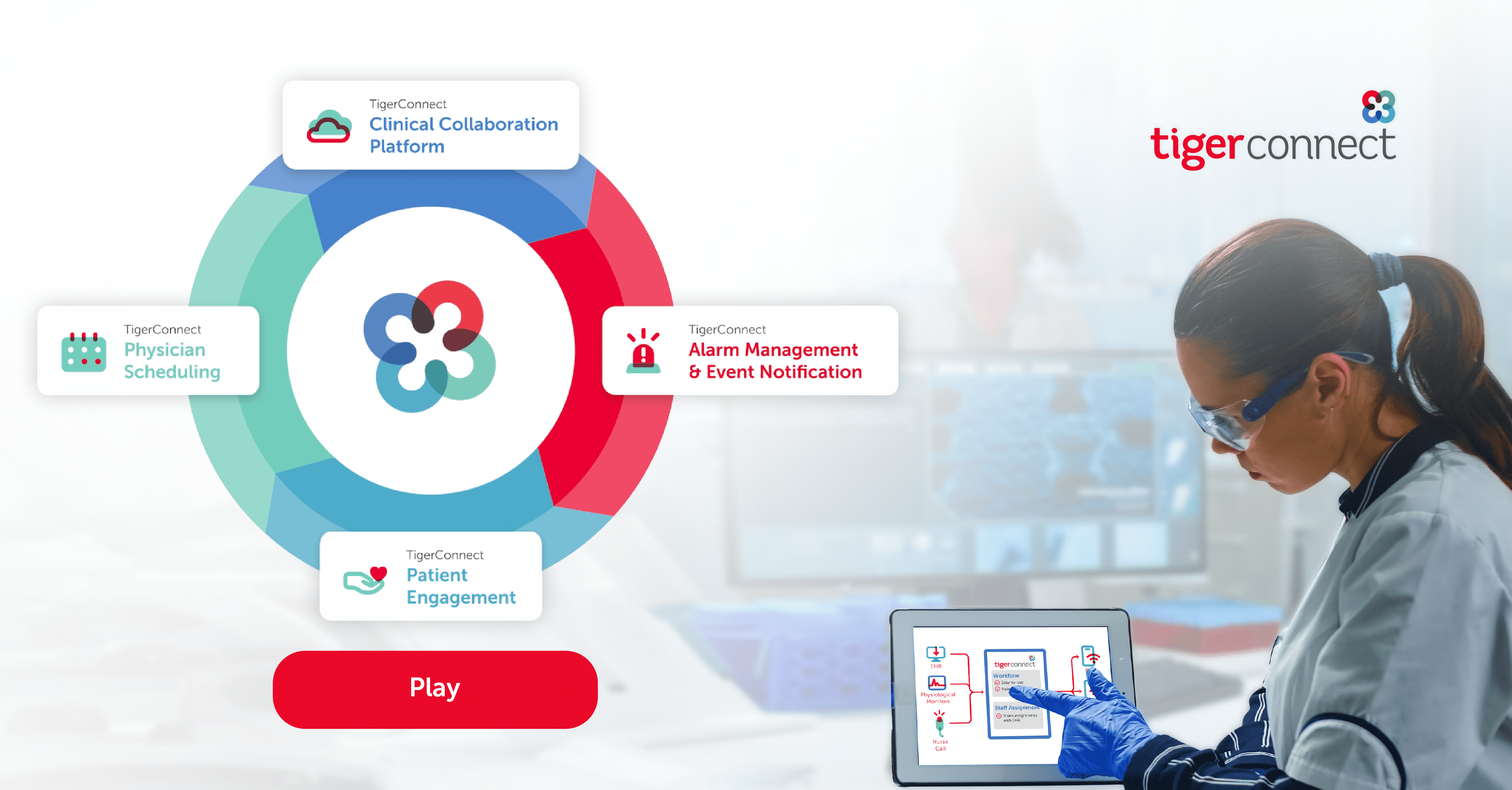Home / Blog /
What 2022 Has in Store for Healthcare Technology: 7 Predictions

What 2022 Has in Store for Healthcare Technology: 7 Predictions
I have a hunch that the healthcare industry will look back on 2021 as a time of significant transition. As hospitals and care teams undertook the arduous task of managing the pandemic for a second year, several facts became clear. For one thing, the healthcare industry is never going back to the way it used to work. Healthcare technology has become more critical in delivering care and managing patient information.
2021 was a year when healthcare providers rewrote the rules on how to provide patient care. With a chronic shortage of staff and an unrelenting patient load, care teams redefined healthcare’s relationship with technology. The adoption of technology in healthcare will continue to evolve in 2022. With the most influential healthcare conference around the corner, here are 7 healthcare technology trends we can expect to see at Healthcare Information and Management Systems Society (HIMSS) and throughout the year.
TigerConnect Product Suite
Discover the value of upgrading to a clinical collaboration platform.
|
 |
Pre-pandemic, providers were reluctant to make serious digital investments that improved how patients and clinicians engaged with the healthcare system and each other. The pandemic exposed healthcare organizations’ vulnerabilities in this context. From the number of planned telehealth and virtual health sessions happening at HIMSS, it is a safe assumption that providers will increase their use of engagement tools like telehealth and other technologies that enable the delivery of a higher standard of care.
2. Health systems will increasingly leverage cloud services to find ways to provide more healthcare for less.
The cloud will enable more healthcare providers to automate administrative processes and reduce costs. For example, by creating a single, integrated solution in the cloud, providers can implement clinical alarm management that improves care delivery by easily consolidating patient data from multiple sources. According to a 2021 PWC study, Medical cost trend: Behind the numbers 2022, 71% of surveyed executives reported significant investments in automating administrative functions, up from 47% the previous year.
3. Non-traditional care venues and telehealth will improve patient outcomes.
The PWC study revealed that 77% of clinicians said that new, non-traditional care venues like retail clinics, coupled with on-demand telehealth services, will improve patient experiences in the coming year. Dr. Jon Lensing, CEO of OpenLoop, notes that in addition to providing patients with additional access to care, other patient feedback praises the accelerated timing of care. “There’s a lot of off-hours covered. There’s weekend coverage now in telehealth. And so, it’s improved the time from requested appointment to actual visit conducted. But even more so, we’re seeing a lot of patients who are very happy and pleasantly surprised with how quickly they can get to a definitive diagnosis.”
4. Data will grow even more in its significance to healthcare organizations and the industry as a whole.
The healthcare data revolution will continue to accelerate in 2022, with Deloitte, for one, expressing the view, “In 2022, health care data is a national infrastructure priority and critical business asset, attracting significant funding. Real-world data (RWD) is providing the information needed to enable researchers to develop more precision medicine and clinicians to predict patients’ response to treatments, improving outcomes and health care productivity.”
5. Healthcare leaders will make big bets on AI.
2022 will be a year of growth and innovation in the use of Artificial Intelligence (AI) in healthcare. According to data from KPMG, healthcare companies will make substantial investments in AI in the hopes of improving telemedicine (according to 38% of survey respondents), robotic tasks (37%), and the delivery of patient care (36%). Additionally, healthcare leaders can leverage AI to advance health equity within their organizations.
The healthcare industry has achieved great progress in having open discussions about health equity over the past few years. However, there is a long road to improving care for underserved populations. AI tools represent an opportunity to support fairness and inclusiveness for all communities.
Goodbye, pagers! Healthcare is the last industry still relying on pagers as a significant part of communication workflows. Healthcare has over a million pagers still in service! However, healthcare systems are beginning to realize that this antiquated technology causes slow, inefficient care and poor experiences for patients and employees. They are replacing pagers with modern clinical communication and collaboration (CC&C) tools for better care team collaboration.
CC&C offers many advantages for care teams, such as enabling communication to roles versus individuals and integrating with physician scheduling software to save physicians time.
7. Healthcare IT will shift away from its focus on EMR.
In 2009, the American Recovery and Reinvestment Act (ARRA) went into effect. ARRA provided incentives for Electronic Medical Records (EMRs), and the industry has raced to make EMRs the backbone of its digital infrastructure ever since. While EMRs predominate and healthcare systems follow the law, EMRs have not lived up to their promise. If anything, they have made care slower and more expensive. They deliver bad experiences for both providers and patients. For example, clinicians need to spend two hours on EMRs for every hour spent with a patient.
During their HIMSS session, “Intelligent, Deeply EMR Integrated Secure Messaging Service”, the University of Maryland Medical System will explain how they integrated secure messaging from TigerConnect into their EMR leading to a better experience for all stakeholders.
These are just a few trends that I think we will see in 2022. It promises to be a year of change, one that will have everyone in the industry leveraging advances in technology to deliver excellent healthcare while improving the profitability of their organizations.
Wendy White
Wendy White is a veteran technology marketing executive with more than 25 years of experience in software and services. As TigerConnect’s Chief Marketing Officer, Wendy leads end-to-end marketing to position the company for accelerated growth with the brand, demand, and customer programs that drive revenue and engage audiences.
Tags: Health IT, TeleHealth, Healthcare Technology, Patient Engagement, Clinical Collaboration, HIMSS








